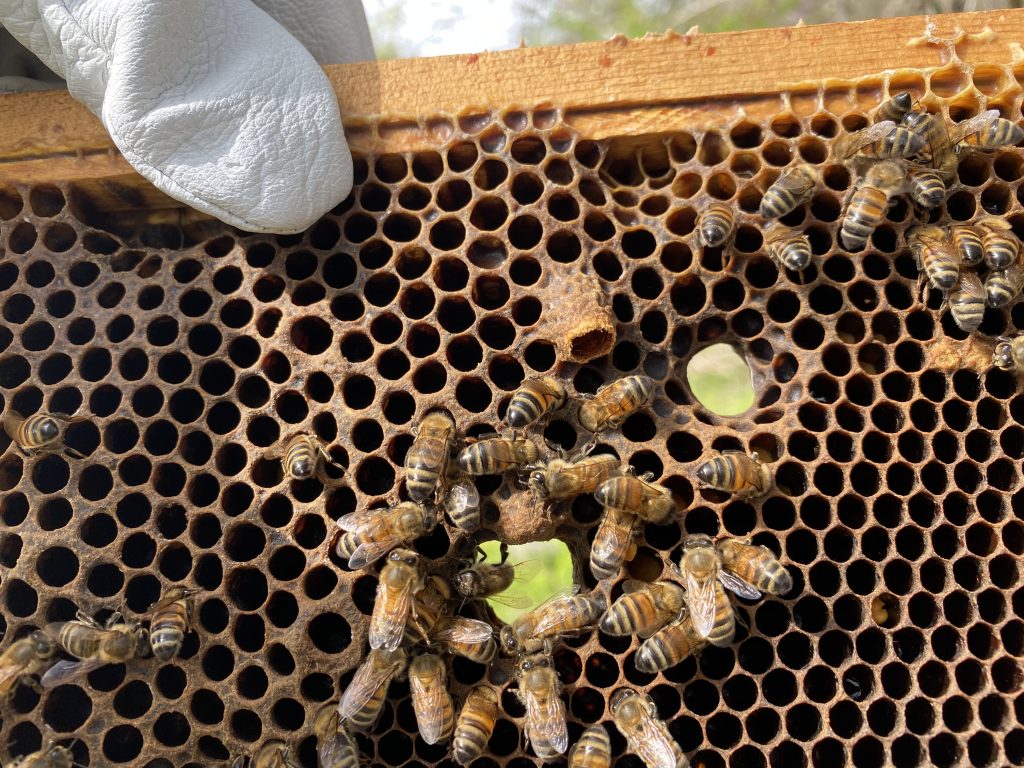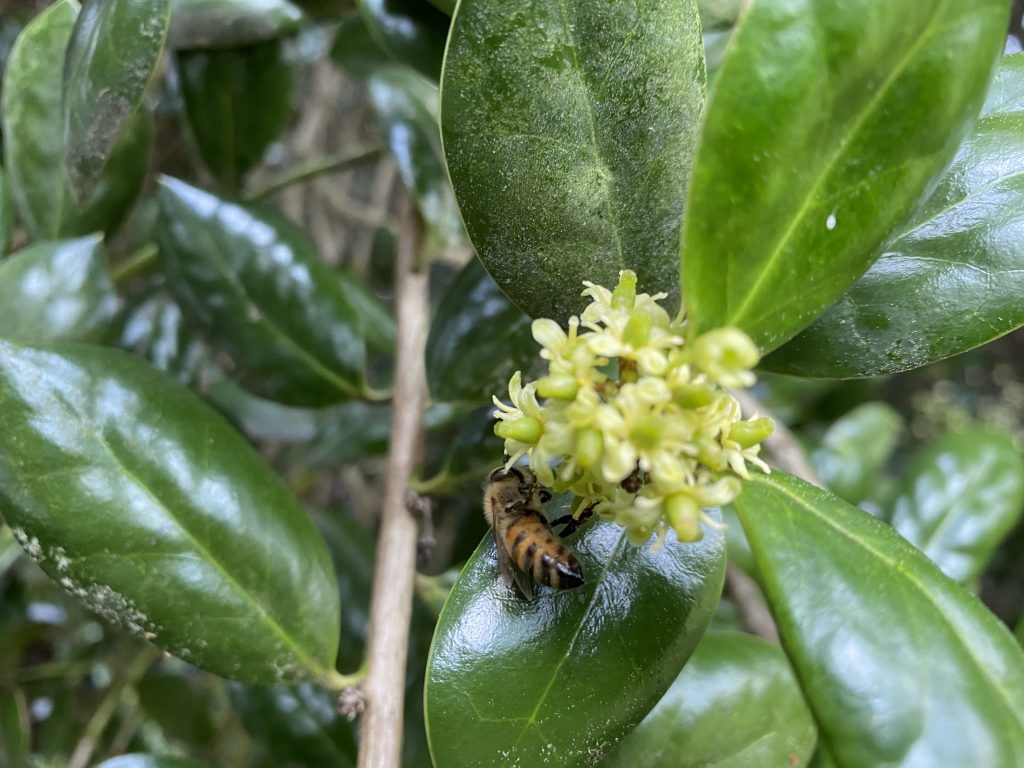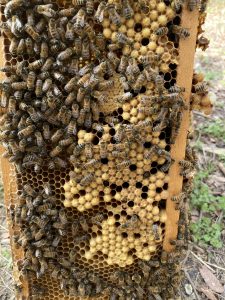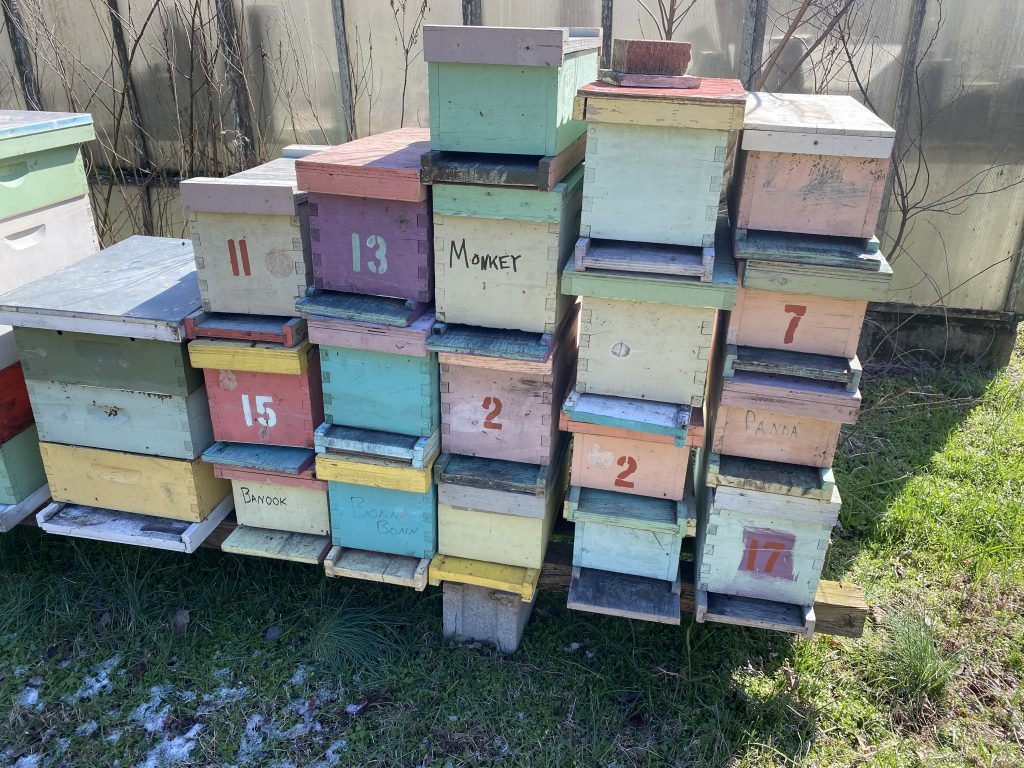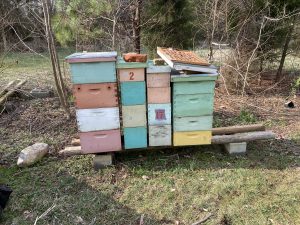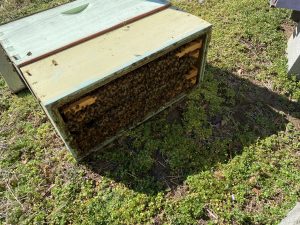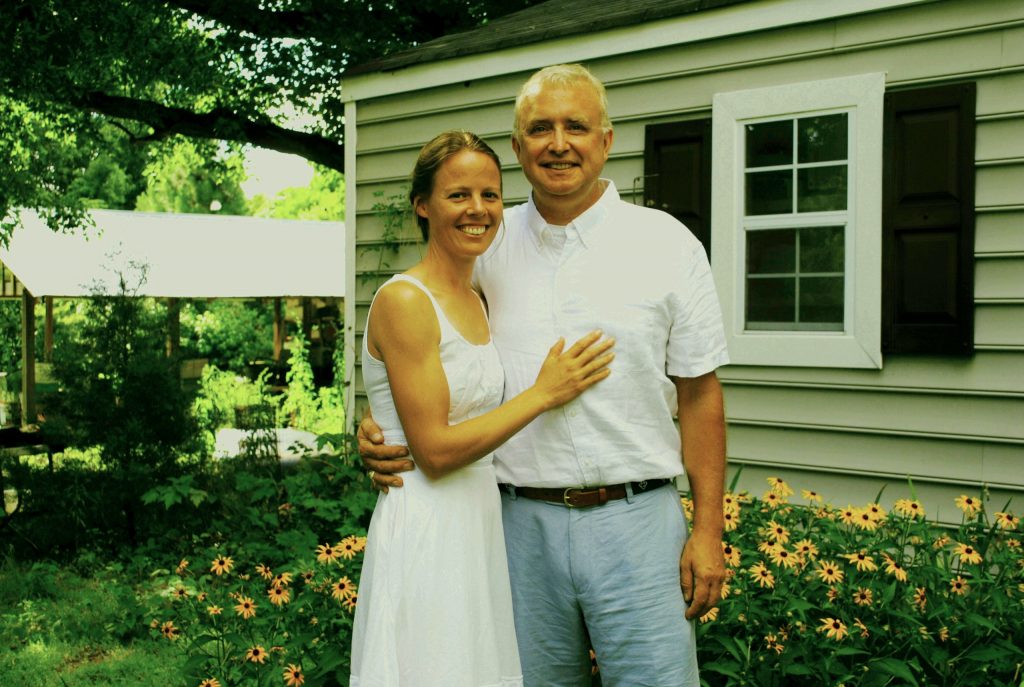June has thrown a couple of new curve balls at me, which
shouldn’t be a shocker. I feel like every month the bees or mother nature throw
something at me which I cannot explain at the time! This time, it centers
around robbing, sort of. On June 16, I went to my first outyard (for my inspection
rounds for that day) and opened a hive to mark a new queen (green!) The hive
was open for maybe 10 minutes… Suddenly, I noticed what was clearly an
onslaught of foreign bees trying to rob the hive. Somewhat alarmed (I had two nucs
for overwintering in that yard and I was certain an attack would not be a good
thing for them), I finished marking the queen, closed up the hive and dropped
entrance reducers on all hives and nucs in that yard. As I left, the number of
bees in the air and on the hives was disturbing, but I had done all that I
could do. I decided it must have been caused by some of the wet supers in the
back of my truck and the high winds of the day.
Moving to the next yard, I placed the wet supers about a
half mile from the hives (along a country road) and moved on to mark a queen in
one of my full hives that had swarmed in early to mid-May. Again, after I
marked the queen, I again noticed an unusually large number of would be robbers
going for the hives (and the nuc) in that yard. Now I was beginning to wonder
what the heck was going on. Again, I quickly reassembled the hive bodies,
dropped some entrance reducers and moved on, still trying to understand what
was going on.
The next yard was an exact repeat of the first two, except that I wasn’t even marking a queen this time. I can almost guarantee the hive was open for less than 5 minutes as I was doing one of my quick health checks. That was enough – I stopped opening hives for the day and went around doing smaller work in the yards and let them be. So, what was going on? To recap – we had had a lot of rain, so it was not dry; anything blooming should have been pouring it on. Unless nothing was blooming (a definite possibility), “attempts to rob” should have been minimal. It should be noted that I always have 5 or 10, maybe even 20, foreign bees nosing around a hive that I open up. But, the resident colony takes care of them without a problem. This time, I was dealing with hundreds of bees and only after keeping the hives open a few minutes (leave them open a long time, normally, and you get hundreds of bees and possibly create an issue – this was not the case on that day.) In addition, the winds were very high – maybe that caused or contributed to the issue, pushing the open honey scent into the air. For now, I am not comfortable with any of the current theories and will just mark this as something to watch next year, in mid-June.
Fast forward to yesterday – the bees seemed completely uninterested in open hives. I went through several, taking some honey supers and otherwise throwing the scent into the air. In addition, I even placed an outer cover with honey on it (I place honey supers on outer covers in my extracting room and they collect a bit of honey before I finish) on my porch in the morning, returning in the afternoon to see that it had not been touched! So, let’s recap – mid-June, plenty of rain and the bees are looking to rob like crazy. June 29, after a good 8 days of heat and no rain (it is definitely dry) and the bees are ignoring the honey scent. It makes absolutely no sense unless we just assume that nothing at all was blooming in mid-June but now we have a flush of blooms at the end of June. I head out again today to reconfigure some hives for Winter, so more to report tomorrow!

